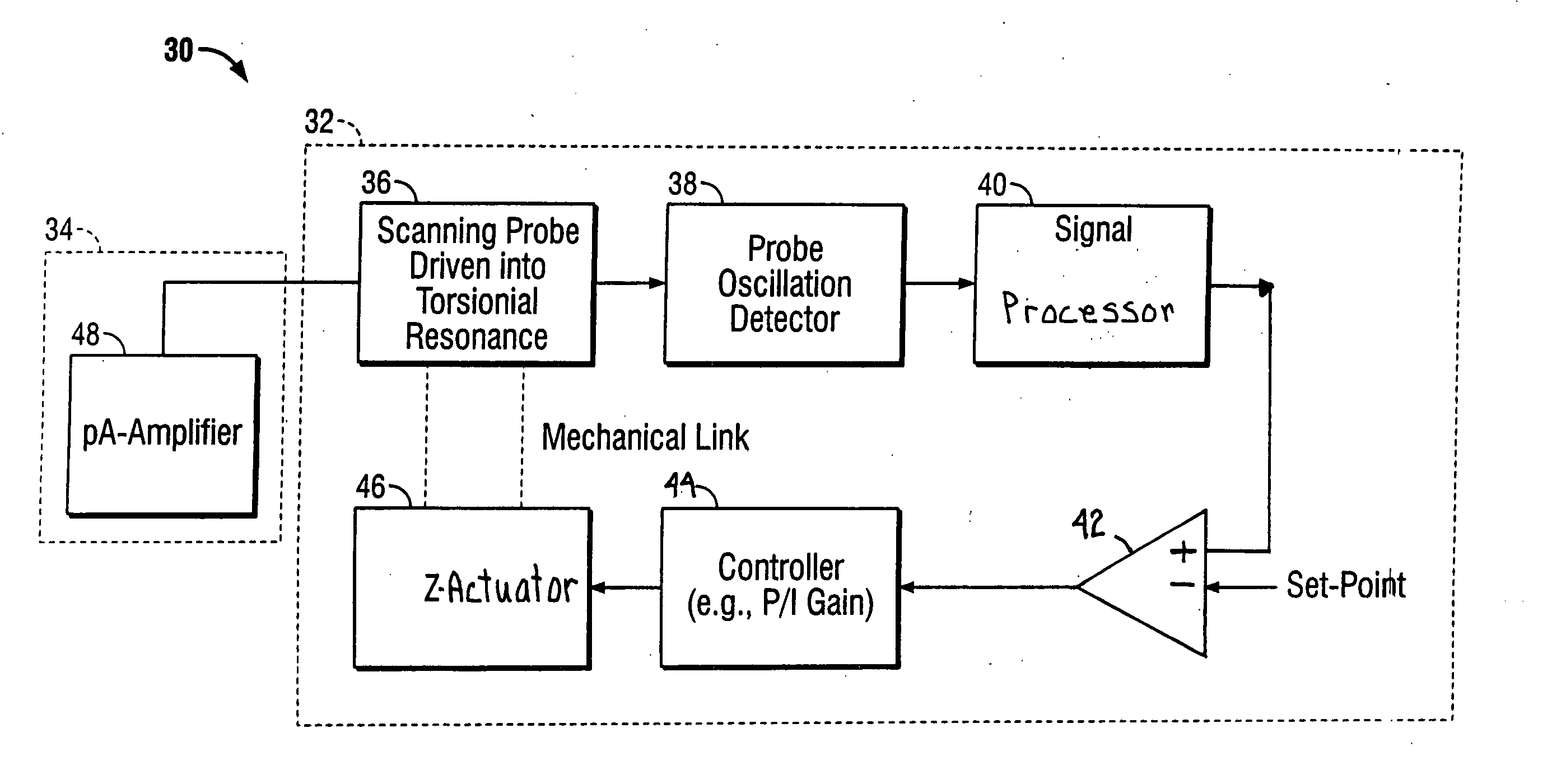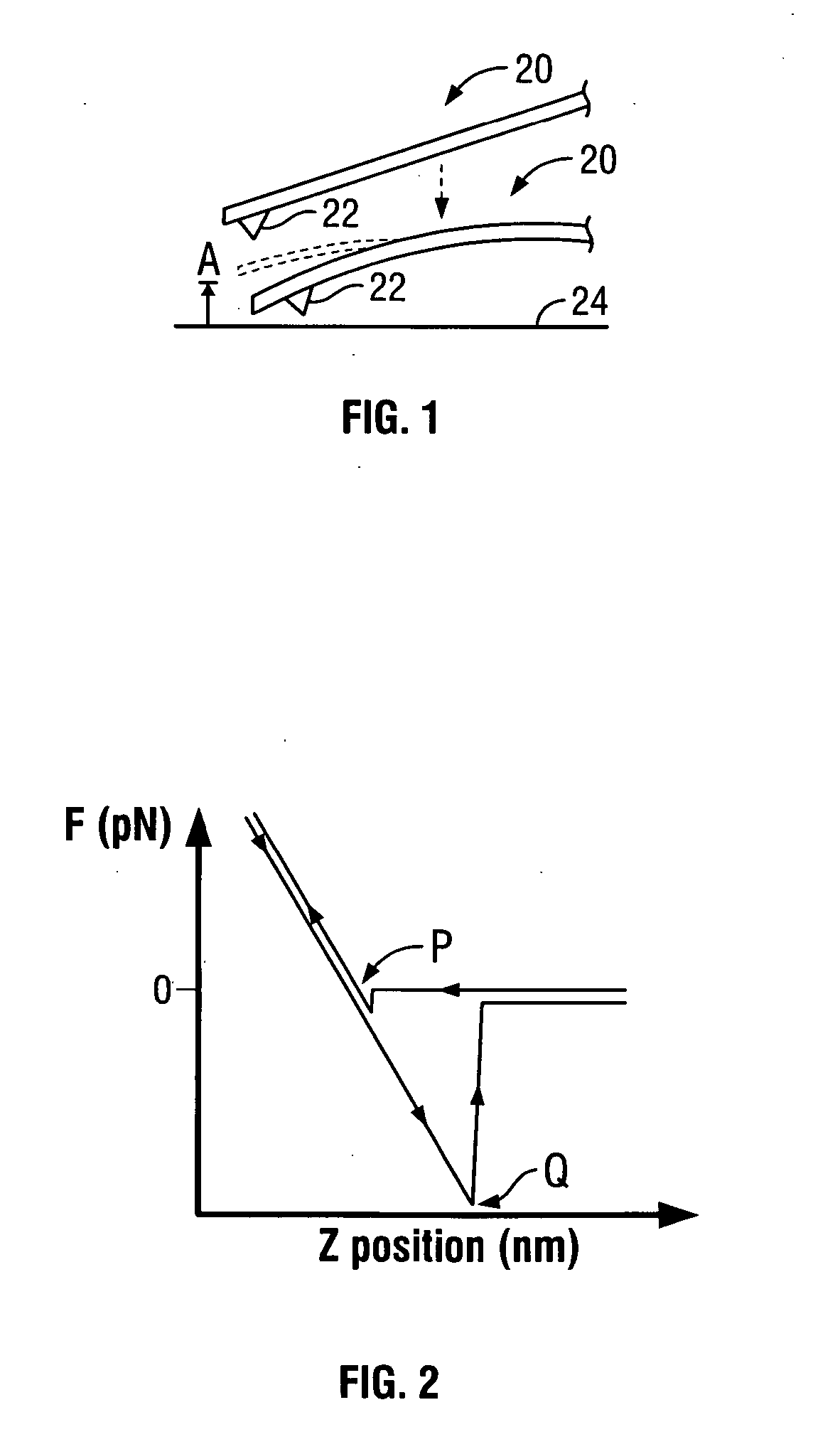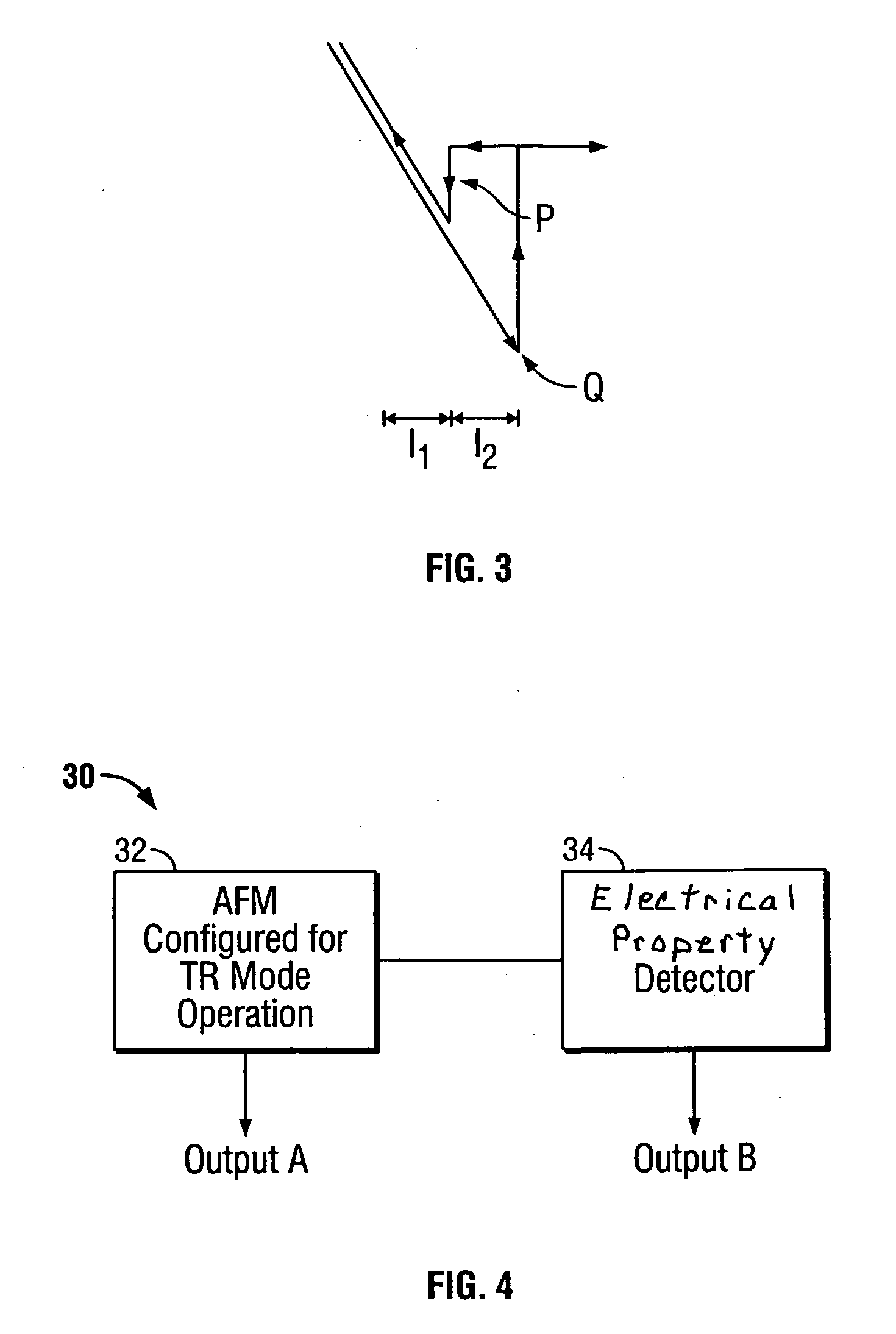Method and apparatus for measuring electrical properties in torsional resonance mode
a technology of torsional resonance and electrical properties, which is applied in the direction of resistance/reactance/impedence, measurement devices, instruments, etc., can solve the problems of stm having a significant drawback, feedback can only maintain a constant force between the tip and the surface, and achieve the effect of soft and delicate materials
- Summary
- Abstract
- Description
- Claims
- Application Information
AI Technical Summary
Benefits of technology
Problems solved by technology
Method used
Image
Examples
Embodiment Construction
[0060] The preferred embodiments take advantage of the benefits provided by a new mode of AFM operation being developed known as torsional resonance mode (“TR mode), shown and described for instance in U.S. Ser. Nos. 10 / 189,108 and 10 / 937,597 to the present assignee. This technique includes driving a cantilever probe at its torsional resonance frequency and using the amplitude of oscillation at resonance for feedback control to keep the tip in proximity to the sample surface. As with other modes of AFM operation, these feedback signals are indicative of a characteristic of a sample, such as sample topography, and can be used to generate a map of the surface. In TR mode, the torsional resonance of the lever and changes thereto are measured by a four-quadrant photo detector. More particularly, the detector differentiates both vertical and horizontal components of probe motion, indicative of, cantilever flexural and torsional motion, respectively.
[0061] The damping of the RMS amplitud...
PUM
 Login to View More
Login to View More Abstract
Description
Claims
Application Information
 Login to View More
Login to View More - R&D
- Intellectual Property
- Life Sciences
- Materials
- Tech Scout
- Unparalleled Data Quality
- Higher Quality Content
- 60% Fewer Hallucinations
Browse by: Latest US Patents, China's latest patents, Technical Efficacy Thesaurus, Application Domain, Technology Topic, Popular Technical Reports.
© 2025 PatSnap. All rights reserved.Legal|Privacy policy|Modern Slavery Act Transparency Statement|Sitemap|About US| Contact US: help@patsnap.com



